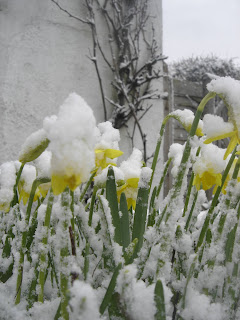Further thoughts on the calculation of wind chill
The Firksin, or Arctic Sheep Hare, possesses a coat that consists of seven layers of fibres. Under temperate conditions these strata of hair lie flat against the body of the animal giving it a sleek, supernaturally white appearance. As the temperature drops, the layers will rise up, one at a time, until the animal will appear to be wearing a woollen fleece.
The Arctic explorer, Cyril Roberts, would seek out populations of grazing hares. He observed that the layers of fur would rise in anticipation of colder conditions and stronger winds, making them a good barometer of inclement weather.
“When the third of forth layer of hairs begin to lift and they start resembling sheep, it's time to anchor the tents as best you can and dig in,” he reported.
Roberts controversially introduced populations of Firksin to the Antarctic where they have thrived. This has brought the animal into conflict with the unloved, but ecologically important, Tonkin's Vole, though the interloper is undoubtedly more favoured by human inhabitants of the region. The vole, with its acute sense of smell and prominent front teeth, is an inveterate raider of food supplies and is capable of biting through tin cans. There are numerous photos of explorers holding up tins of food with an engorged vole dangling from the side by its teeth, its mouth agape, like a swollen leach.
First Nation tribes have perfected the technique of preserving Firksin pelts in a manner that maintains the capillary action that governs the raising and lowering of the layers of fur. This only works if the pelt is worn in direct contact with the skin. Properly preserved Firksin pelts can function independently of the animal for up to a year. Garments made from these skins are often patched with fresh pelts as the old ones lose their efficacy. A Firksin blanket, given to Roberts by a native guide on one of his Arctic expeditions, is on display at The London museum of Exploration.




Comments
Post a Comment